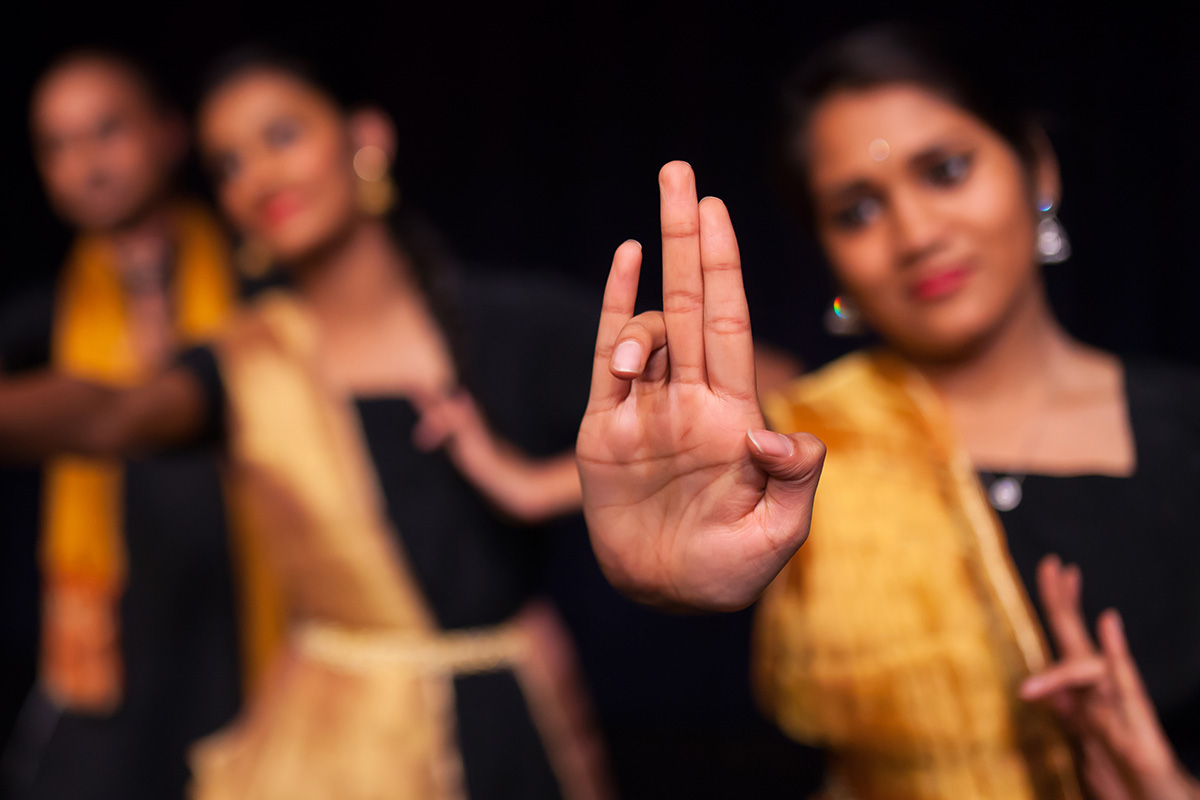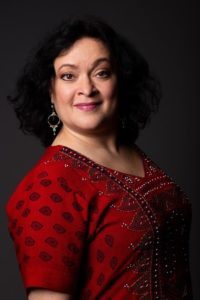Indian Dance School Monsoon

At Indian Dance School Monsoon in The Hague, you can attend classes in Southern Indian classical dance style: Bharata Natyam. Indian Dance School Monsoon was founded in 1991 by the teacher and dancer Jolanda Boejharat. Jolanda completed her dance degree in Bharata Natyam on the 21st of November in 1991. Ever since she has been passionate about teaching Indian dance at various levels. Jolanda has taught to various audiences and participated in a sheer number of diverse projects.
India is known for its rich tradition of classical folk dance styles. In The Netherlands of those dance styles are popularly practised: Bharata Natyam (from Southern India), Kathak (North India) and Odissi. At Indian Dance School Monsoon, we teach the authentic Bharata Natyam tradition. Besides acquiring dancing skills this includes knowledge about musical accompaniment, costume/makeup and details on the history of Bharata Natyam.
Indian dance generally consists of two facets; a storytelling part and a technical part. Some people say that the Indian dance style has existed for about 20.000 years and originates in religious practice. In the past Devadasi (literally ‘servants to God’) performed this particular style in temple complexes. This temple tradition evolved into a more theatrically styled dance performance yet loyal to its religious contents.
The storytelling aspect: Love for God is the overall theme of Bharata Natyam performance. When you practice this dance style, you will learn to experience love for the Divine yourself. You will enact to become ‘the mother of Krishna’ or ‘a Devotee’, as they honour the Divine. Indian dance performance has a meditative effect, partly resulting from its gracious hand movements and detailed shape.
The technical aspect: Techniques are the other important part of the Bharata Natyam repertoire. As a dancer you will work hard striving to acquire techniques that help you become one with the rhythm.
Classical Indian dance repertoire is generally divided into three different categories: Natya, Nritya and Nritta. This categorizing stems from the ancient Ahinaya Darpana, Sangitaratnakara and other medieval sources.
Natya: Means ‘drama’. In India, this category refers to a theatrical dance that excels in technical virtuosity and is a combination of both technique and expression.
Nritya: Means ‘dance’ and this category relates to both sentiment (rasa) and emotion. Realizing gracefulness is its main focus.
Nirtta: means ‘pure dance’. Dance steps that are executed to the rhythm. In this category, there is no emotion or meaning involved. The dance steps form patterns and lines that in themselves can create beauty. Virtuosity and dynamics are its main focus.
The ultimate Indian dancer aims for a perfect balance between these three categories that come together in the dance.

The name ‘’Monsoon’’ has several meanings: A monsoon is a seasonal change in the direction of the prevailing, or strongest, winds of a region. Monsoons cause wet and dry seasons throughout much of the tropics. Monsoons are mostly associated with the Indian Ocean region and stand for fertility.
As the winds change from East to West, so do art forms when they travel from one place elsewhere. It’s the idea of fertile inspiration yet open to change that also sums up the vision behind Indian Dance School Monsoon.
In ancient Indian poetry, the Monsoon also is a symbol of desire. The female heroine loyally awaits her husband, as he can’t come home yet because of the heavy rainfall. The beautiful soft orange colours that you can see on our website, stands for unanswered love and desire. The blue Monsoon logo depicts the rain.
Jolanda Boejharat teaches in the Tanjavur style, which is a particular style in the Bharata Natyam in which she was raised and educated.
“I went to Madras in 1994, where I participated in the dance classes taught by Marter Sri M.D. Venkatesh. His Tanjavur style can be traced back to the Sri Kanchipuram Elappa Mudaliar style.”
– Jolanda Boejharat
This makes Jolanda part of an established family tree from gurus in Indian Dance that can be traced back to the 18th century.
Are you interested to see the full family tree? View the whole family tree.

Jolanda Djaimala Boejharat is the founder and main teacher of Indian Dance School Monsoon.
After being trained by Smt Sitra Bonoo and her public debut as a dancer (arangetram) on the 21st of November of 1991, Jolanda was determined to further share her knowledge about Indian Dance (Bharata Natyam, Kathak and fusion forms).
Jolanda had a successful career as a dancer. Nowadays she at different levels teaches, choreographs and coaches dancers who are looking for their identity in the (Indian) dance scene. Jolanda already guided lots of students towards their arangetram.
Jolanda passed her senior Bharat Natyam exam in 2018. She participated in the state exams in Bangalore, India. Jolanda was coached by Sri S.V. Giridhara from the Nandi Taal Vadya Academy in Bangalore.
Jolanda is the founder and coordinator of the WereldDansWerkPlaats in The Hague. WereldDansWerkPlaats stands for the importance of a breeding ground where dance styles from all over the world meet and are appreciated for their own riches. The WereldDansWerkPlaats gives dancers and choreographers of different global dance styles the opportunity to do a step forward by providing them with coaching and a stage to perform.
Indiase Dansschool Monsoon is onderdeel van deze overkoepelende organisatie: de WereldDansWerkPlaats.
The Hague as a city is proud of its sheer diversity of dance styles and dance troops: Indian dance, African dance, flamenco, tango, belly dance, salsa and Javanese, Chinese and Surinamese dance traditions. The Hague also has an upcoming urban dance scene. Dancers and choreographers of different backgrounds and traditions come together perform their dance in the best way possible in spite of these performers and choreographers often lacking the financial resources or adequate infrastructure. They want to keep on developing their skills and show their arts to a larger audience. The WereldDansWerkPlaats makes a difference in familiarizing the public with dance styles hitherto unknown or unable to reach the audiences it deserves
